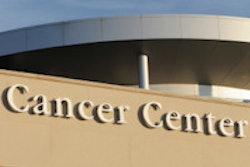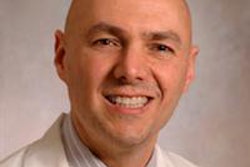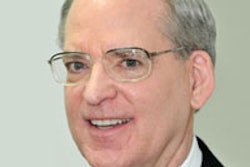
DrBicuspid.com is pleased to present the next installment of Leaders in Dentistry, a series of interviews with researchers, practitioners, and opinion leaders who are influencing the practice of dentistry and oral healthcare.
We spoke with Michael B. Prystowsky, MD, PhD, chairman of the department of pathology at the Albert Einstein College of Medicine and the Montefiore Medical Center in New York. Dr. Prystowsky's research focuses on head and neck cancers. He oversees a multidisciplinary group that includes surgery, oncology, pathology, molecular biology, protein chemistry, systems biology, epidemiology, and biostatistics to study the molecular mechanism regulating tumor behavior.
Dr. Prystowsky discussed the "Annual Report to the Nation on the Status of Cancer," recently released by the Journal of the National Cancer Institute, which found that while the number of cancer deaths in the U.S. has declined, the rate of human papillomavirus (HPV)-related cancers is rising.
DrBicuspid.com: A report published January 7 in the Journal of the National Cancer Institute noted that the rate of HPV-related oropharyngeal cancers is rising. What do you think is causing the increase?
 Michael B. Prystowsky, MD, PhD.
Michael B. Prystowsky, MD, PhD.
Dr. Prystowsky: More than 60% of oropharyngeal cancers are related to HPV infection, and it takes years for an HPV-related cancer to develop after infection with the virus. Most people clear the HPV infection and develop natural immunity to the HPV type that caused the infection. It is difficult to say why there has been an increase in HPV infection during the past 20 years resulting in these cancers. But there is a clear relationship between the number of sexual partners and the risk of HPV infection and, thus, risk of HPV-related head and neck cancers. Since we now have a safe, effective vaccine for the two most common types of HPV (16 and 18) that cause cancer, it is critical that our children are vaccinated.
Researchers have found that parts of the genome are missing in cancer patients. What do you know about such genetic mutations among oral cancer patients?
Head and neck squamous cell carcinomas (HNSCCs) are mainly related to tobacco and alcohol use (oral cavity) or HPV infection (oropharynx) in the U.S. Recent studies have shown genetic differences in the cancers driven by carcinogens versus those caused by HPV. This is a hot topic of research today because patients with HPV-related cancers appear to have a better outcome than patients with cancers related to smoking. For oral cavity cancer, whole exome studies have confirmed several known genes to be mutated in a significant number of cases of oral cavity cancer, including TP53, CDKN2A, PI3KCA, HRAS, and the NOTCH1 gene.
What are the best ways to detect oral cancer?
Dentists should be, and often are, well-trained in recognizing malignant lesions of the oral cavity. The training should continue, and awareness should be increased among the dental community to ensure that patients with oral cavity cancer and oropharyngeal cancers are recognized and referred to a head and neck surgical specialist in a timely fashion.
A recent study concluded that clinical oral exams have poor overall performance as diagnostic methods for predicting dysplasia and oral squamous cell carcinoma. What do you think of the oral cancer tests now on the market?
My opinion is that screening tests are not cost-effective. The best approach is the proper education of dentists and primary care physicians to identify findings that concern them, including the following:
- White or red lesions of the oral mucosa
- Lesions that bleed easily
- One or multiple loose teeth with no other clear cause
- Numbness of the teeth, gums, or overlying skin of the jaw
- Dentures that suddenly do not fit not properly
When there is concern, the patient should be referred to a specialist who can diagnose HNSCC and biopsy the lesion to confirm the diagnosis.
What is the greatest challenge in successfully treating head and neck cancers?
While I do not treat patients with HNSCC myself, I believe the greatest challenge is to identify the optimal treatment for the patient that will result in the best chance for survival and cause the least morbidity. These cancers and their treatments affect appearance and the ability to eat and to speak. These are major quality of life issues that need to be factored into the treatment of each patient.
Where do you think we will see the next big breakthrough for oral cancer in treatment or prevention?
For prevention, the most important national issue for oropharyngeal cancers is to get our children (boys and girls) vaccinated. For oral cavity cancers, the reduction in smoking across the country has already resulted in a significant decrease in these cancers. Further reducing tobacco use would probably help the most people. As of yet, identifying a genetic change that might make these tumors susceptible to a drug has been difficult, but this would be a major breakthrough.
What are you working on now?
Our group, which consists of a full clinical team led by Richard V. Smith, MD, at the Montefiore Medical Center and a research team at the Albert Einstein College of Medicine, is working on clinical and basic studies on factors that make HNSCC more or less aggressive. We are also, both with clinical and laboratory studies, actively pursuing ways to improve the treatment of head and neck cancer.



















